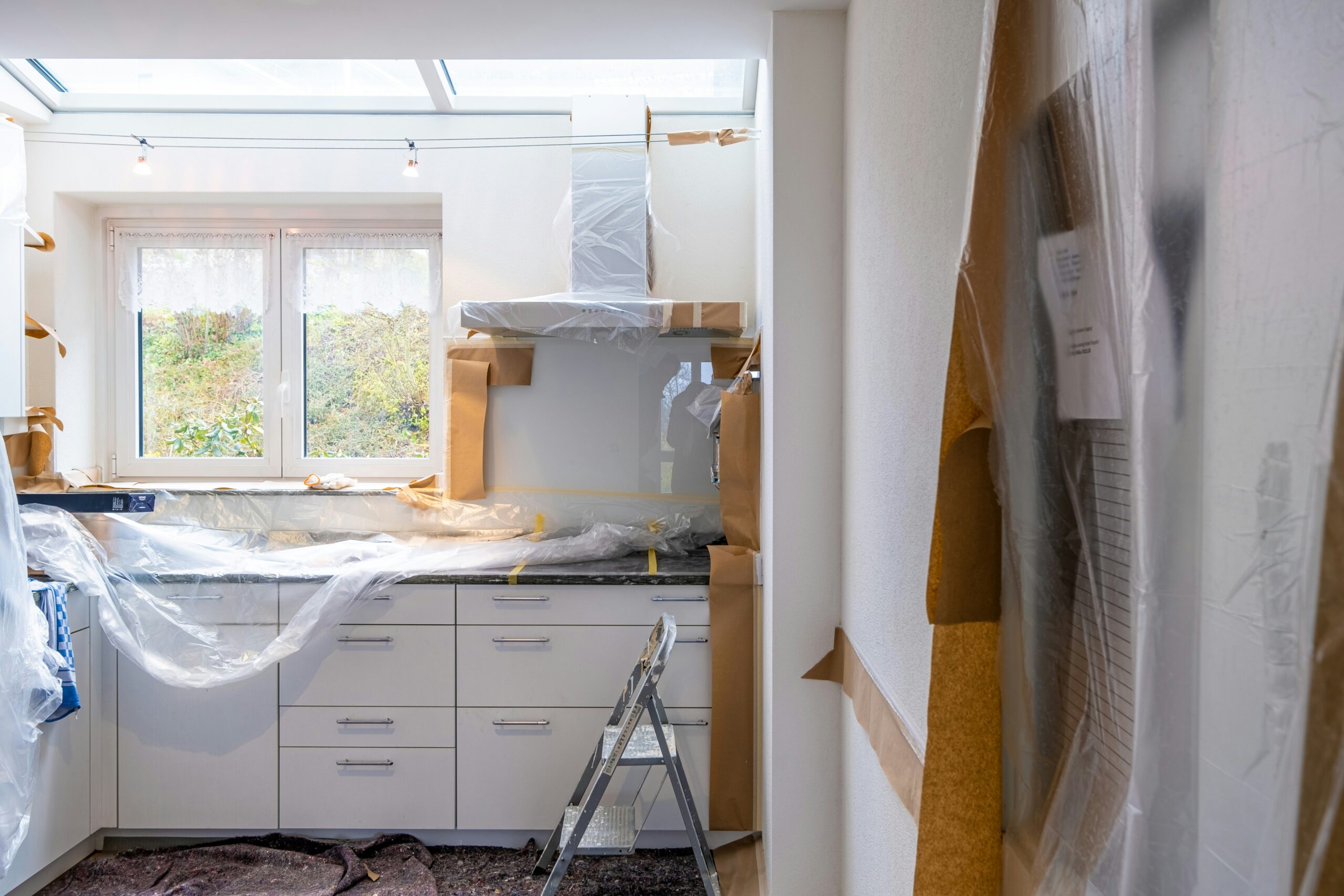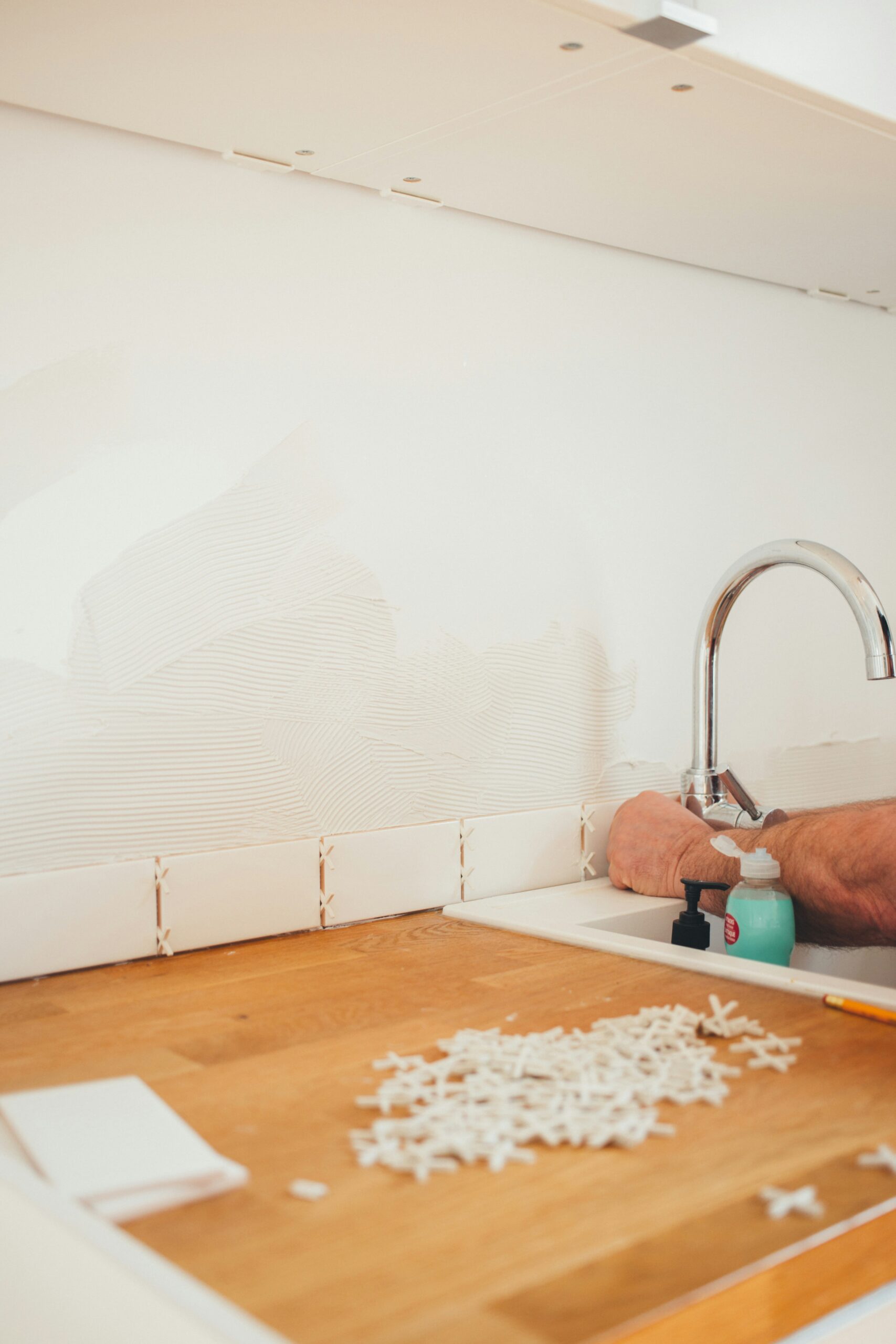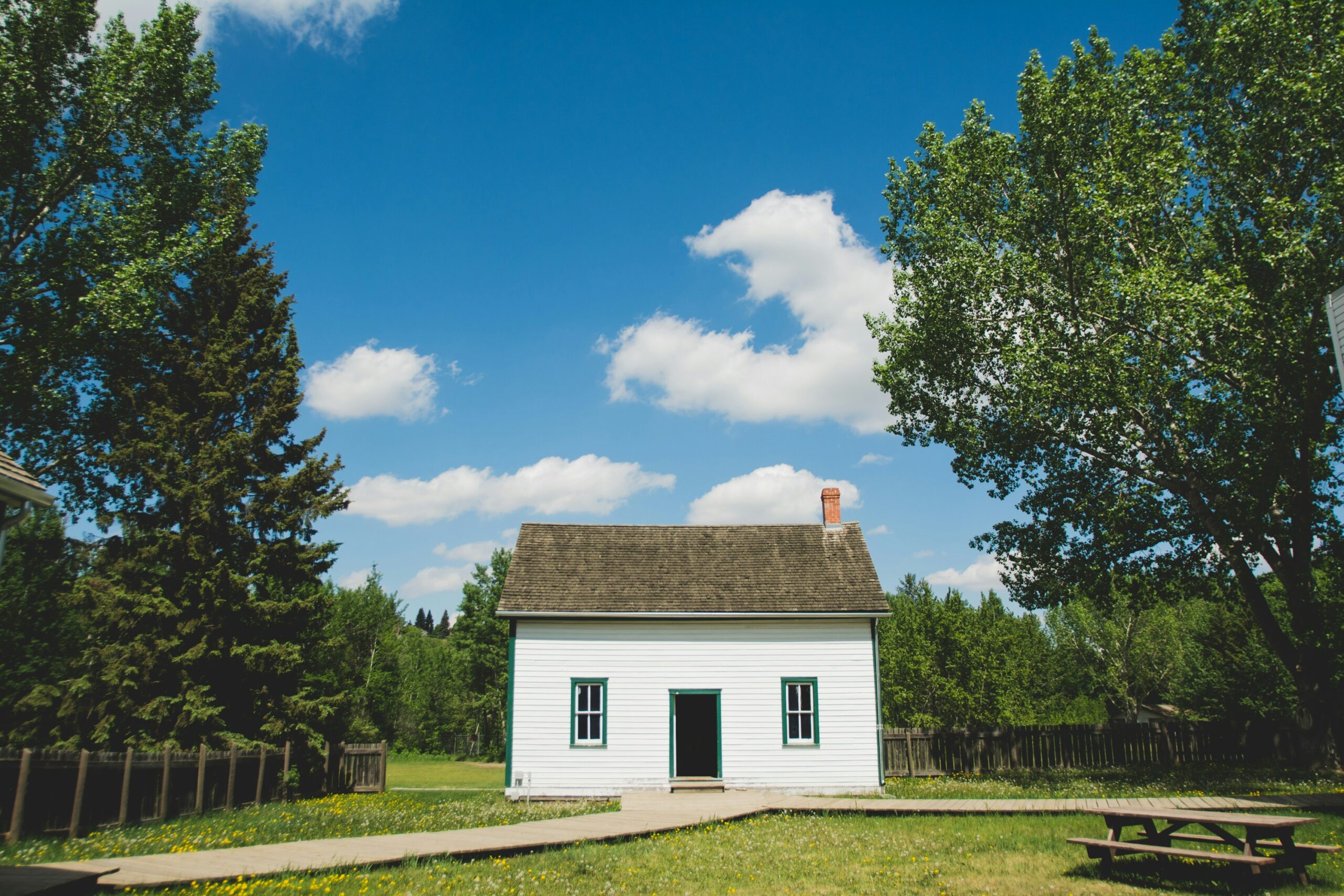Red Flags to Watch for When Buying a Fixer-Upper in Denver
July 25, 2025
Red Flags to Watch for When Buying a Fixer-Upper in Denver
July 25, 2025
Fixer-uppers can be fantastic opportunities to build equity and create your dream home at a lower entry price. As both a General Contractor and Realtor in Denver, I’ve helped countless buyers navigate fixer-upper purchases—some that turned into incredible success stories and others that became expensive lessons. The difference often comes down to recognizing red flags before you buy.
Denver’s housing market includes many homes from the 1960s through 1990s that offer great renovation potential, but not every fixer-upper is a good investment. Some problems are manageable DIY projects or reasonable contractor expenses, while others can cost tens of thousands more than you expect and turn your dream home into a financial nightmare.
Let me share the critical red flags that should make you think twice about a fixer-upper purchase, along with the warning signs that experienced contractors and realtors watch for when evaluating renovation properties.
Foundation and Structural Issues: The Deal Breakers
Foundation and structural problems are the most serious red flags because they’re expensive to fix and can affect your home’s safety and value. These issues often require specialized contractors and can easily cost $20,000 to $50,000 or more to address properly.
Foundation Warning Signs
Look for cracks in foundation walls, especially horizontal cracks or cracks wider than a quarter-inch. Stair-step cracks in brick or block foundations, doors and windows that don’t close properly, and floors that slope or feel bouncy all suggest foundation settlement or structural movement.
In Denver’s clay soil conditions, foundation issues are particularly common in older homes. Our soil expands and contracts dramatically with moisture changes, putting constant stress on foundations. What looks like minor cracking can indicate ongoing movement that requires expensive underpinning or stabilization work.
Structural Red Flags
Be extremely cautious about homes where walls have been removed without proper engineering. Load-bearing walls that have been altered incorrectly can compromise your home’s structural integrity and require expensive repairs to bring up to code.
Look for sagging rooflines, cracks where walls meet ceilings, and doors or windows that are out of square. These often indicate structural movement that goes beyond normal settling and may require significant intervention.
The Cost Reality
Foundation repairs in Denver typically start at $15,000 for minor issues and can exceed $75,000 for major problems. Structural repairs often require engineering analysis, permits, and specialized contractors, making them some of the most expensive renovation challenges you can face.
Electrical Systems: Safety and Code Compliance
Electrical problems in fixer-uppers range from minor updates to complete rewiring projects that can cost $15,000 to $30,000 or more. More importantly, outdated or improperly modified electrical systems create serious safety hazards.
Dangerous Electrical Conditions
Homes with knob-and-tube wiring, aluminum wiring from the 1960s-1970s, or Federal Pacific electrical panels should raise immediate red flags. These systems are not only outdated but can create fire hazards and insurance problems.
Look for evidence of DIY electrical work: junction boxes that aren’t properly covered, extension cords used as permanent wiring, outlets without GFCI protection in bathrooms and kitchens, and electrical panels that look modified or have multiple circuits on single breakers.
Code Compliance Issues
Denver’s electrical codes are strict, and bringing older homes up to current standards can be expensive. Homes that lack adequate circuits for modern appliances, don’t have proper grounding, or have insufficient outlet placement will need significant electrical work.
Insurance and Financing Challenges
Many insurance companies won’t cover homes with knob-and-tube wiring, aluminum wiring, or Federal Pacific panels. Some lenders also have restrictions on financing homes with these electrical systems, which can complicate your purchase and limit your buyer pool when you sell.
Plumbing Problems: Hidden Costs and Complications
Plumbing issues in fixer-uppers can range from simple fixture updates to complete re-piping projects. The challenge is that many plumbing problems are hidden behind walls and under slabs, making them difficult to assess until renovation work begins.
Pipe Material Red Flags
Homes with galvanized steel pipes (common in homes built before 1960), polybutylene pipes (used in the 1970s-1990s), or cast iron sewer lines often need complete re-piping. These materials have known failure patterns and can create ongoing problems and insurance issues.
Galvanized pipes corrode from the inside out, reducing water pressure and quality over time. Polybutylene pipes are prone to sudden failure and have been the subject of class-action lawsuits. Cast iron sewer lines deteriorate and can cause expensive backups and repairs.
Water Damage and Moisture Issues
Look for signs of past or ongoing water damage: water stains on ceilings or walls, musty odors, warped flooring, or areas where paint is peeling or bubbling. These often indicate plumbing leaks that may have caused hidden damage to framing, insulation, or other building materials.
Sewer and Drainage Problems
Homes with recurring drain backups, sewage odors, or wet basements may have serious sewer line or drainage issues. These problems can cost $10,000 to $25,000 or more to fix and often require excavation and landscaping restoration.
HVAC Systems: Efficiency and Replacement Costs
Heating and cooling systems in fixer-uppers are often outdated, inefficient, or improperly maintained. While HVAC replacement is more predictable than structural or electrical work, it’s still a significant expense that can impact your renovation budget.
System Age and Condition
Furnaces and air conditioning systems typically last 15-20 years with proper maintenance. Systems approaching or exceeding this age should be considered for replacement, especially if they haven’t been well-maintained.
Look for signs of poor maintenance: dirty or clogged filters, rust or corrosion on equipment, ductwork that’s damaged or disconnected, and systems that don’t heat or cool evenly throughout the house.
Efficiency and Operating Costs
Older HVAC systems can be extremely inefficient, leading to high utility bills that offset your savings on the purchase price. Systems with low efficiency ratings or that use outdated refrigerants may need replacement sooner than expected.
Ductwork and Distribution Issues
Many older Denver homes have ductwork problems that affect comfort and efficiency: undersized ducts, poor insulation, leaky connections, and inadequate return air systems. Fixing ductwork problems can add $5,000 to $15,000 to HVAC replacement costs.
Roofing: Protection and Immediate Needs
Roofing problems in fixer-uppers can range from minor repairs to complete replacement. The key is understanding the difference between cosmetic issues and problems that require immediate attention to prevent further damage.
Age and Material Considerations
Asphalt shingle roofs typically last 20-25 years in Denver’s climate, while other materials have different lifespans. Roofs approaching the end of their expected life should be budgeted for replacement, even if they’re not currently leaking.
Damage Assessment
Look for missing, cracked, or curling shingles, exposed nail heads, damaged flashing around chimneys and vents, and gutters that are pulling away from the house. These issues suggest deferred maintenance that may have allowed water infiltration.
Hidden Water Damage
Roof leaks often cause damage that’s not immediately visible: rotted roof decking, damaged insulation, mold growth, and structural damage to rafters or trusses. What appears to be a simple roofing project can become much more expensive if water damage is discovered during replacement.
Environmental Hazards: Health and Legal Issues
Older homes often contain environmental hazards that require specialized handling and can add significant costs to renovation projects.
Asbestos Concerns
Homes built before 1980 commonly contain asbestos in various materials: floor tiles, pipe insulation, siding, and popcorn ceilings. Disturbing asbestos-containing materials during renovation requires specialized contractors and can add $10,000 to $30,000 or more to project costs.
Lead Paint Issues
Homes built before 1978 likely contain lead paint, which requires special handling during renovation. Lead-safe work practices, containment, and disposal add significant costs to painting and renovation projects, especially in homes with children under six.
Mold Problems
Mold growth from past water damage or ongoing moisture issues can create health problems and expensive remediation requirements. Extensive mold problems may require professional remediation costing $5,000 to $20,000 or more.
Permit and Code Compliance Red Flags
Many fixer-uppers have unpermitted work or code violations that can create legal and financial problems for new owners.
Unpermitted Additions and Alterations
Rooms added without permits, electrical or plumbing work done without permits, and structural modifications that weren’t approved can create serious problems. You may be required to bring unpermitted work up to current codes or even remove it entirely.
Illegal Rental Units
Some fixer-uppers contain illegal basement apartments or other rental units that don’t meet code requirements. These can create liability issues and may need to be removed or extensively modified to meet legal requirements.
Zoning and Use Violations
Properties being used in ways that violate zoning requirements can create ongoing legal problems. Commercial use in residential zones, too many unrelated occupants, or other zoning violations can result in fines and forced compliance.
Financial Red Flags: Budget Busters
Some fixer-upper problems are particularly expensive or unpredictable, making them dangerous for buyers with limited budgets or tight timelines.
Combination Problems
Properties with multiple major systems needing replacement—roof, HVAC, electrical, and plumbing—can quickly exceed renovation budgets. Even if each individual system seems manageable, the combination can create financial strain.
Access and Logistics Issues
Homes where major systems are difficult to access can have much higher labor costs. Furnaces in crawl spaces, electrical panels in finished basements, or plumbing in concrete slabs all increase renovation complexity and costs.
Neighborhood and Market Considerations
Fixer-uppers in declining neighborhoods or areas with limited appreciation potential may
not provide good returns on renovation investments. Research neighborhood trends and comparable sales to ensure your investment makes financial sense.
How to Evaluate Fixer-Upper Potential
Professional Inspections
Always get comprehensive inspections from qualified professionals, even if you’re buying “as-is.” Structural engineers, electrical contractors, and plumbing contractors can identify problems that general inspectors might miss.
Renovation Cost Estimates
Get realistic cost estimates for major repairs and improvements before making an offer. Many buyers underestimate renovation costs by 50% or more, turning good deals into financial disasters.
Total Investment Analysis
Calculate your total investment including purchase price, renovation costs, carrying costs during renovation, and a contingency fund of at least 20% for unexpected problems. Compare this to the expected value after renovation to ensure the project makes financial sense.
When to Walk Away
Some red flags should make you seriously consider walking away from a fixer-upper deal:
- Multiple major systems needing immediate replacement
- Structural or foundation problems requiring engineering
- Environmental hazards requiring specialized remediation
- Extensive unpermitted work or code violations
- Total renovation costs exceeding 50% of the after-renovation value
- Problems that create safety hazards for your family
Making Smart Fixer-Upper Decisions
The key to successful fixer-upper purchases is realistic assessment of both problems and potential. Work with professionals who can help you understand true costs and identify deal-breakers before you commit.
Remember that fixer-uppers require time, money, and patience beyond your initial estimates. Make sure you have adequate financial reserves and realistic timelines for your renovation projects.
Ready to Evaluate Your Fixer-Upper Opportunity?
Whether you’re considering a specific property or want to understand what to look for in fixer-upper opportunities, I can help you make informed decisions that protect your investment and achieve your goals.
As both a General Contractor and Realtor, I can help you assess renovation costs, identify potential problems, and determine whether specific properties represent good investment opportunities.
Schedule Your Fixer-Upper Evaluation Consultation:
- Professional assessment of renovation potential and costs
- Identification of red flags and deal-breakers
- Market analysis to ensure investment viability
- Guidance on negotiation strategies for fixer-upper purchases
Kitchen renovations consistently rank as one of the most popular and valuable home improvement projects, and for good reason. A well-executed kitchen remodel can transform your daily living experience while [...]
Fixer-uppers can be fantastic opportunities to build equity and create your dream home at a lower entry price. As both a General Contractor and Realtor in Denver, I've helped countless [...]
Timing can make a significant difference in how quickly your Denver home sells and the price you receive. As both a Realtor and General Contractor who's helped countless homeowners navigate [...]
Fixer-uppers can be fantastic opportunities to build equity and create your dream home at a lower entry price. As both a General Contractor and Realtor in Denver, I’ve helped countless buyers navigate fixer-upper purchases—some that turned into incredible success stories and others that became expensive lessons. The difference often comes down to recognizing red flags before you buy.
Denver’s housing market includes many homes from the 1960s through 1990s that offer great renovation potential, but not every fixer-upper is a good investment. Some problems are manageable DIY projects or reasonable contractor expenses, while others can cost tens of thousands more than you expect and turn your dream home into a financial nightmare.
Let me share the critical red flags that should make you think twice about a fixer-upper purchase, along with the warning signs that experienced contractors and realtors watch for when evaluating renovation properties.
Foundation and Structural Issues: The Deal Breakers
Foundation and structural problems are the most serious red flags because they’re expensive to fix and can affect your home’s safety and value. These issues often require specialized contractors and can easily cost $20,000 to $50,000 or more to address properly.
Foundation Warning Signs
Look for cracks in foundation walls, especially horizontal cracks or cracks wider than a quarter-inch. Stair-step cracks in brick or block foundations, doors and windows that don’t close properly, and floors that slope or feel bouncy all suggest foundation settlement or structural movement.
In Denver’s clay soil conditions, foundation issues are particularly common in older homes. Our soil expands and contracts dramatically with moisture changes, putting constant stress on foundations. What looks like minor cracking can indicate ongoing movement that requires expensive underpinning or stabilization work.
Structural Red Flags
Be extremely cautious about homes where walls have been removed without proper engineering. Load-bearing walls that have been altered incorrectly can compromise your home’s structural integrity and require expensive repairs to bring up to code.
Look for sagging rooflines, cracks where walls meet ceilings, and doors or windows that are out of square. These often indicate structural movement that goes beyond normal settling and may require significant intervention.
The Cost Reality
Foundation repairs in Denver typically start at $15,000 for minor issues and can exceed $75,000 for major problems. Structural repairs often require engineering analysis, permits, and specialized contractors, making them some of the most expensive renovation challenges you can face.
Electrical Systems: Safety and Code Compliance
Electrical problems in fixer-uppers range from minor updates to complete rewiring projects that can cost $15,000 to $30,000 or more. More importantly, outdated or improperly modified electrical systems create serious safety hazards.
Dangerous Electrical Conditions
Homes with knob-and-tube wiring, aluminum wiring from the 1960s-1970s, or Federal Pacific electrical panels should raise immediate red flags. These systems are not only outdated but can create fire hazards and insurance problems.
Look for evidence of DIY electrical work: junction boxes that aren’t properly covered, extension cords used as permanent wiring, outlets without GFCI protection in bathrooms and kitchens, and electrical panels that look modified or have multiple circuits on single breakers.
Code Compliance Issues
Denver’s electrical codes are strict, and bringing older homes up to current standards can be expensive. Homes that lack adequate circuits for modern appliances, don’t have proper grounding, or have insufficient outlet placement will need significant electrical work.
Insurance and Financing Challenges
Many insurance companies won’t cover homes with knob-and-tube wiring, aluminum wiring, or Federal Pacific panels. Some lenders also have restrictions on financing homes with these electrical systems, which can complicate your purchase and limit your buyer pool when you sell.
Plumbing Problems: Hidden Costs and Complications
Plumbing issues in fixer-uppers can range from simple fixture updates to complete re-piping projects. The challenge is that many plumbing problems are hidden behind walls and under slabs, making them difficult to assess until renovation work begins.
Pipe Material Red Flags
Homes with galvanized steel pipes (common in homes built before 1960), polybutylene pipes (used in the 1970s-1990s), or cast iron sewer lines often need complete re-piping. These materials have known failure patterns and can create ongoing problems and insurance issues.
Galvanized pipes corrode from the inside out, reducing water pressure and quality over time. Polybutylene pipes are prone to sudden failure and have been the subject of class-action lawsuits. Cast iron sewer lines deteriorate and can cause expensive backups and repairs.
Water Damage and Moisture Issues
Look for signs of past or ongoing water damage: water stains on ceilings or walls, musty odors, warped flooring, or areas where paint is peeling or bubbling. These often indicate plumbing leaks that may have caused hidden damage to framing, insulation, or other building materials.
Sewer and Drainage Problems
Homes with recurring drain backups, sewage odors, or wet basements may have serious sewer line or drainage issues. These problems can cost $10,000 to $25,000 or more to fix and often require excavation and landscaping restoration.
HVAC Systems: Efficiency and Replacement Costs
Heating and cooling systems in fixer-uppers are often outdated, inefficient, or improperly maintained. While HVAC replacement is more predictable than structural or electrical work, it’s still a significant expense that can impact your renovation budget.
System Age and Condition
Furnaces and air conditioning systems typically last 15-20 years with proper maintenance. Systems approaching or exceeding this age should be considered for replacement, especially if they haven’t been well-maintained.
Look for signs of poor maintenance: dirty or clogged filters, rust or corrosion on equipment, ductwork that’s damaged or disconnected, and systems that don’t heat or cool evenly throughout the house.
Efficiency and Operating Costs
Older HVAC systems can be extremely inefficient, leading to high utility bills that offset your savings on the purchase price. Systems with low efficiency ratings or that use outdated refrigerants may need replacement sooner than expected.
Ductwork and Distribution Issues
Many older Denver homes have ductwork problems that affect comfort and efficiency: undersized ducts, poor insulation, leaky connections, and inadequate return air systems. Fixing ductwork problems can add $5,000 to $15,000 to HVAC replacement costs.
Roofing: Protection and Immediate Needs
Roofing problems in fixer-uppers can range from minor repairs to complete replacement. The key is understanding the difference between cosmetic issues and problems that require immediate attention to prevent further damage.
Age and Material Considerations
Asphalt shingle roofs typically last 20-25 years in Denver’s climate, while other materials have different lifespans. Roofs approaching the end of their expected life should be budgeted for replacement, even if they’re not currently leaking.
Damage Assessment
Look for missing, cracked, or curling shingles, exposed nail heads, damaged flashing around chimneys and vents, and gutters that are pulling away from the house. These issues suggest deferred maintenance that may have allowed water infiltration.
Hidden Water Damage
Roof leaks often cause damage that’s not immediately visible: rotted roof decking, damaged insulation, mold growth, and structural damage to rafters or trusses. What appears to be a simple roofing project can become much more expensive if water damage is discovered during replacement.
Environmental Hazards: Health and Legal Issues
Older homes often contain environmental hazards that require specialized handling and can add significant costs to renovation projects.
Asbestos Concerns
Homes built before 1980 commonly contain asbestos in various materials: floor tiles, pipe insulation, siding, and popcorn ceilings. Disturbing asbestos-containing materials during renovation requires specialized contractors and can add $10,000 to $30,000 or more to project costs.
Lead Paint Issues
Homes built before 1978 likely contain lead paint, which requires special handling during renovation. Lead-safe work practices, containment, and disposal add significant costs to painting and renovation projects, especially in homes with children under six.
Mold Problems
Mold growth from past water damage or ongoing moisture issues can create health problems and expensive remediation requirements. Extensive mold problems may require professional remediation costing $5,000 to $20,000 or more.
Permit and Code Compliance Red Flags
Many fixer-uppers have unpermitted work or code violations that can create legal and financial problems for new owners.
Unpermitted Additions and Alterations
Rooms added without permits, electrical or plumbing work done without permits, and structural modifications that weren’t approved can create serious problems. You may be required to bring unpermitted work up to current codes or even remove it entirely.
Illegal Rental Units
Some fixer-uppers contain illegal basement apartments or other rental units that don’t meet code requirements. These can create liability issues and may need to be removed or extensively modified to meet legal requirements.
Zoning and Use Violations
Properties being used in ways that violate zoning requirements can create ongoing legal problems. Commercial use in residential zones, too many unrelated occupants, or other zoning violations can result in fines and forced compliance.
Financial Red Flags: Budget Busters
Some fixer-upper problems are particularly expensive or unpredictable, making them dangerous for buyers with limited budgets or tight timelines.
Combination Problems
Properties with multiple major systems needing replacement—roof, HVAC, electrical, and plumbing—can quickly exceed renovation budgets. Even if each individual system seems manageable, the combination can create financial strain.
Access and Logistics Issues
Homes where major systems are difficult to access can have much higher labor costs. Furnaces in crawl spaces, electrical panels in finished basements, or plumbing in concrete slabs all increase renovation complexity and costs.
Neighborhood and Market Considerations
Fixer-uppers in declining neighborhoods or areas with limited appreciation potential may
not provide good returns on renovation investments. Research neighborhood trends and comparable sales to ensure your investment makes financial sense.
How to Evaluate Fixer-Upper Potential
Professional Inspections
Always get comprehensive inspections from qualified professionals, even if you’re buying “as-is.” Structural engineers, electrical contractors, and plumbing contractors can identify problems that general inspectors might miss.
Renovation Cost Estimates
Get realistic cost estimates for major repairs and improvements before making an offer. Many buyers underestimate renovation costs by 50% or more, turning good deals into financial disasters.
Total Investment Analysis
Calculate your total investment including purchase price, renovation costs, carrying costs during renovation, and a contingency fund of at least 20% for unexpected problems. Compare this to the expected value after renovation to ensure the project makes financial sense.
When to Walk Away
Some red flags should make you seriously consider walking away from a fixer-upper deal:
- Multiple major systems needing immediate replacement
- Structural or foundation problems requiring engineering
- Environmental hazards requiring specialized remediation
- Extensive unpermitted work or code violations
- Total renovation costs exceeding 50% of the after-renovation value
- Problems that create safety hazards for your family
Making Smart Fixer-Upper Decisions
The key to successful fixer-upper purchases is realistic assessment of both problems and potential. Work with professionals who can help you understand true costs and identify deal-breakers before you commit.
Remember that fixer-uppers require time, money, and patience beyond your initial estimates. Make sure you have adequate financial reserves and realistic timelines for your renovation projects.
Ready to Evaluate Your Fixer-Upper Opportunity?
Whether you’re considering a specific property or want to understand what to look for in fixer-upper opportunities, I can help you make informed decisions that protect your investment and achieve your goals.
As both a General Contractor and Realtor, I can help you assess renovation costs, identify potential problems, and determine whether specific properties represent good investment opportunities.
Schedule Your Fixer-Upper Evaluation Consultation:
- Professional assessment of renovation potential and costs
- Identification of red flags and deal-breakers
- Market analysis to ensure investment viability
- Guidance on negotiation strategies for fixer-upper purchases
Buying your first home in Denver is an exciting milestone, but it can also be overwhelming in our competitive market. As both a Realtor and General Contractor who's helped countless [...]
Kitchen renovations consistently rank as one of the most popular and valuable home improvement projects, and for good reason. A well-executed kitchen remodel can transform your daily living experience while [...]
Fixer-uppers can be fantastic opportunities to build equity and create your dream home at a lower entry price. As both a General Contractor and Realtor in Denver, I've helped countless [...]






